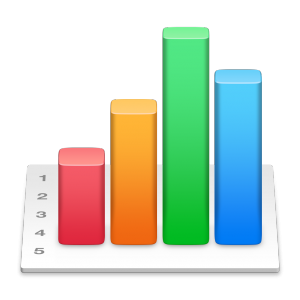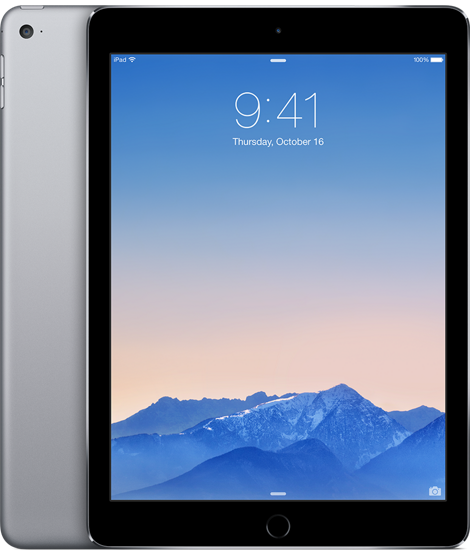Apple October Event Roundup: Software and Services

Apple's October event was a big one. They introduced new iPads and updated one Mac and introduced another new Mac the last thing to talk about is software and services and with that, let us dive in.
iOS 8.1

Apple introduced iOS 8.0 last month. In that time 48% of iOS devices are running iOS 8.0, and 47% are running iOS 7. The remaining 5% are running an earlier version of iOS. iOS 8.1 includes a couple of bug fixes and includes support Apple Pay. iOS 8.1 will be available on Monday, October 20th as a free upgrade for all of those running iOS 8.0. The iPad Air 2 and iPad Mini 3 should be running iOS 8.1. Besides Apple Pay, there are other new features for the update, just Apple Pay.
WatchKit

At the September event, Apple announced their new product line, the Apple Watch. At that time they also announced a new framework, WatchKit; they stated that it would be coming later this year. They were not incorrect when they stated this. At today's event, Apple announced that the WatchKit framework would be coming in November to allow developers time to determine how best to support the Apple Watch with their applications. There was no update on release date for the Apple Watch outside of "Early 2015".

Apple Pay
Apple introduced its payment service, Apple Pay, last month at their September Event. At that time, they stated that Apple Pay would begin rolling out in October. Well, a date has been set, and it is on Monday, October 20th, and it will only begin in the United States. Apple has partnered with the three largest card issuers, Visa, MasterCard, and American Express. Also at the September event Apple stated that they were starting with the largest banks. In the interim, they have signed up over 500 banks. All of these will begin to roll out support for Apple Pay this year as well as early next year.
OS X 10.10 Yosemite

All Macs being shipped today, including the updated Mac Mini and the iMac with 5K Retina Display will be running OS X 10.10 Yosemite. It is available now in the Mac App Store and is available for Free. If you are running OS X 10.8 or OS X 10.9 Mavericks, you can upgrade right now.
OS X Server 4.0

There was a piece of software that was not mentioned and that is OS X 10.10 Yosemite Server. It was also updated to version 4.0. Unlike OS X 10.10 Yosemite, Server 4.0 is not a free upgrade and costs $19.99. It can be downloaded from the Mac App Store. OS X Server 4.0 will only run on OS X 10.10 Yosemite.
iWork



One of the suites of software that was announced as receiving an update is the iWork Suite. Pages, Numbers and Keynote have been updated to take advantage of the features of OS X 10.10 Yosemite. Pages 5.5 includes support for Handoff, iCloud drive support, an updated file format, Apple Support for mail merge, and improved table support. Numbers 3.5 includes support for Handoff, iCloud Drive, an updated file format, improved table support, and the ability to easily resize and re-position charts. Keynote 6.5 includes support for Handoff, iCloud Drive, an updated file format, the ability to move and customize items in the presenter's display, the ability to pair Keynote with nearby iOS devices by using Multipeer connectivity, and improved table support.
iWork is a free upgrade for those who have already purchased the applications. If you have not, you can download Pages, Numbers, and Keynote for $19.99 each.
GarageBand

GarageBand has been updated to 10.0.3. The changes associated with this are OS X 10.10 Yosemite support, Mail Drop support, a new Voice template to easily create a voice track, and the addition of audio-effect plugins. GarageBand is available in the Mac App Store as a free update, or $4.99 if you do not already own the application.
iMovie

iMovie 10.0.6 includes an updated look for OS X 10.10 Yosemite, a set of new export options, including Audio Only, the ability to share a frame as an image, the ability to email HD video with Mail Drop, improved performance, and the ability for developers to create App Previews as well as screen capturing directly from an iPhone or iPad. It is available now in the Mac App Store as a free update, or $14.99 if you do not already own it.
iPhoto

iPhoto received only a very minor update to version 9.6. The only fixes are compatibility fixes for OS X 10.10 Yosemite. It is available in the Mac App Store for free.
Final Thoughts
Even though we knew that OS X 10.10 Yosemite was right around the corner, we did not know the exact release date. The unveiling of the Apple Pay start date, as well as the accompanying iOS 8.1 update, will let users being using Apple Pay on Monday. With over 500 banks that will be supporting Apple Pay, it is quite likely that a bank near you will be supporting the service sometime soon.








